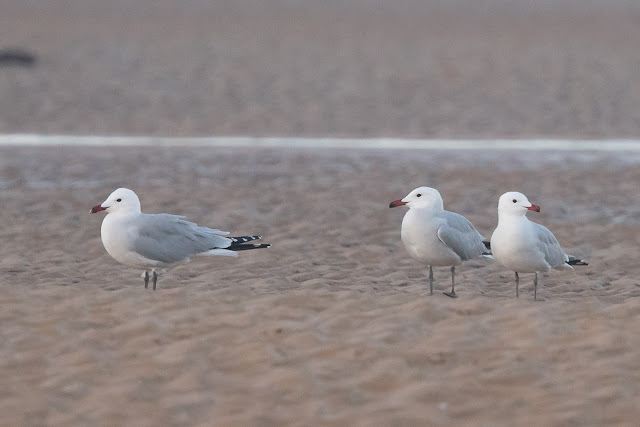This is my summary of records of rare birds from the UK in February 2018, this is not aimed at being a comprehensive account of all the rare species in the UK in this month, for such accounts see the Birdguides review of the week or the Rare Bird Alert weekly round-up. I am largely writing this as a personal record of rarity records to aid my knowledge and feed my interest in UK birds. The dates provided under each species are only the date of the finding of that bird, 'megas' are shown in red and a full date range for these species is shown. I have only included confirmed records and, generally, have not included possibles or probables. The photographs that I used have been gleaned from the internet, I aim to provide the photographer with full credit and a link to their website or blog, if you see that one of yours has been used and you object to this then please email me and I will remove it immediately, alternatively if you would like to supply a better image or additional information or links then I will add. Contact me at simon@ecosa.co.uk
NEARCTIC SPECIES
Pacific Diver
Crookhaven, County Cork - Bird found on 18th January was present until 18th February. An account of the finding of this bird can be found on Birdguides here.
Marazion, Cornwall - The returning bird was present off Marazion, Penzance and Moushole from the beginning of the month until at least 19th February. On 16th it was with a White-billed Diver.
Pacific Diver - Crookham, County Cork. Fantastic image by Sam Northwood. The chin strap and lack of white flank patch are noticeable here. More of Sam's fantastic images can be viewed on his Rare Bird Alert gallery here.
Loch of Spiggie, Mainland / Shetland - Found on 4th November 2017 and present until at least 27th February.
Semipalmated Plover
Keel, Achill Island, County Mayo - The bird first found on 19th September 2017 was present until at least the 24th February.
Long-billed Dowitcher
Lady's Island Lake, County Wexford - 27th February.
Bonaparte's Gull
Killybeg. County Donegal - 2nd-winter 13th February.
Thayer's Gull
Blashford Lake and Tidpit, Hampshire - A juvenile first found at the gull roost on Ibsley Water, Blashford Lake on 28th Januray continued to commute between this roost and the pigfields at Tidpit all month.
American Herring Gull
Cashen Estuary, County Kerry - 15th February.
(Taiga) Merlin
Burnside, Highland - A first winter male between 3rd and 18th February. A bird of the subspecies columbarius which occurs from Alaska east through southern and central Canada to Newfoundland and south to the northern USA. The subspecies has been suggested to be a separate species from Merlin. There are previous records from Ireland, Iceland and the Azores.
American Horned Lark
Staines, Surrey - The female of the one of the subspecies alpestris, praticola or hoyti showed well throughout the month.
Red-breasted Goose
Sedbergh, Cumbria - One on 10th February.
King Eider
Blacksod, County Mayo - 1st winter male on 20th February.
Ross's Gull
Weymouth, Dorset - An adult winter was recorded from 21st February until the months end moving between Ferrybridge, Radipole Lake, Lodmoor and Overcombe.
This stunning adult Ross's Gull graced the Weymouth birding sites from 21st February until the months end but disapeared with the onset of blasting easterly winds and heavy snow associated with the 'Beast from the East'. This image by Peter Moore was one of the best flight shots that I saw, many more of Peter's images can be seen on his blog here.
Gyr Falcon
Bunowen Pier, County Galway - White morph on 13th February.
Termoncarragh Lough, County Mayo - White morph on 20th February.
Tongue, Highland - White morph on 25th February.
Italian Sparrow
East Budleigh, Devon - The probable first found on 11th November 20117 was present throughout February.
Parrot Crossbill
Horsford, Norfolk - Up to 12 on 23rd February.
Sutton Common, Suffolk - 3 on 15th February.
Pine Bunting
Holt. Norfolk - A bird seen in an area with no access on 4th February was seen on a second occasion on 22nd February.
Chambers Wall, Kent - A male was seen briefly on both 17th and 18th February.











































































